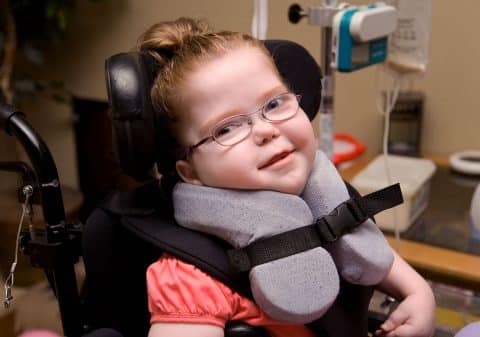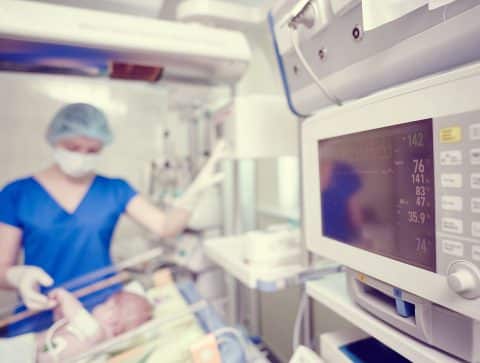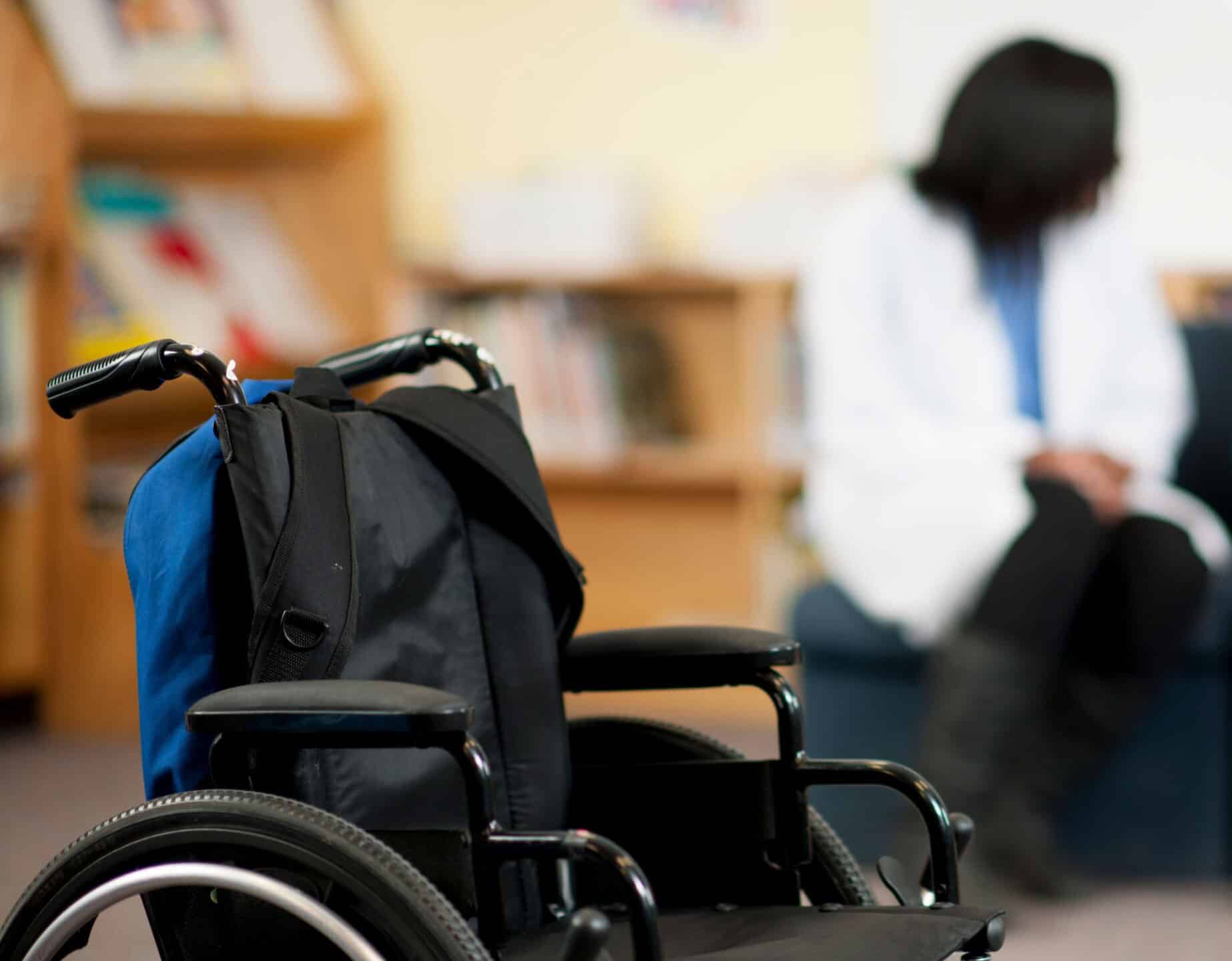When you learn your child has cerebral palsy, you may feel as if your world has turned upside down. The diagnosis is overwhelming.
You know that your life and that of your child have been changed forever. Your child will need special care for the rest of his or her life.
According to the Mayo Clinic, a person diagnosed with cerebral palsy will require a lifetime of specialized treatment, including medication, surgery, and physical therapy.

In addition, other professionals may be helpful:(1)
- Pediatric neurologist
- Orthopedic surgeon
- Occupational therapist
- Speech and language pathologist
Cerebral Palsy May Be the Result of Negligence
Sometimes cerebral palsy results from mistakes that occurred during delivery. For example, during a complicated birth, your child may have been deprived of oxygen for minutes, rather than seconds.
Or, if the physician used forceps during the delivery, twisting your baby’s neck in the process, your baby’s brain could have been damaged, resulting in cerebral palsy. Other complications during delivery might also have contributed to your child’s brain damage.

What Is Cerebral Palsy?
Cerebral palsy is usually a condition that results from brain damage to a baby’s developing brain. “Cerebral” refers to the brain. “Palsy” refers to the loss or impairment of motor function.(2)
Most often, cerebral palsy is a condition that can be traced to damage that took place in the developing brain of an unborn baby.(3) According to the Centers for Disease Control and Prevention (CDC), cerebral palsy occurs when certain parts of an infant’s or young child’s brain are damaged at some specific time — before or during birth, even “within a month after birth, or during the first years of a child’s life, while the brain is still developing.”(4)
According to WebMD, “CP starts in the area of the brain that controls the ability to move muscles. Cerebral palsy can happen when that part of the brain doesn’t develop as it should, or when it is damaged right around the time of birth or very early in life.”(5)
Was your child diagnosed with cerebral palsy due to medical malpractice? Contact us now for a free consultation.
Get a Free Case ReviewIn addition to complications during a difficult birth, possible contributors to brain damage resulting in cerebral palsy include:(6)
- Bleeding in the baby’s brain — while in the womb, during birth, or afterward
- Lack of blood flow to essential organs
- Seizures — at birth or during the first month of life
- Genetic conditions
- Trauma to the baby’s developing brain
Congenital vs. Acquired Cerebral Palsy
According to the CDC, most children — 85% to 90% — diagnosed with cerebral palsy suffered brain damage before or during birth. This type of cerebral palsy is called congenital.(7)
Only a small percentage of children are diagnosed with cerebral palsy due to brain damage that occurs more than 28 days after birth. This is known as acquired cerebral palsy. Infections such as meningitis or trauma to the head, such as from a car accident, may damage a young child’s brain and lead to the diagnosis of cerebral palsy.(8)
How Brain Damage May Occur
During pregnancy, the embryo, and then the fetus, is fragile from the moment of conception. Women who receive some types of infertility treatments through assisted reproductive technology face a greater risk of giving birth to an infant with cerebral palsy.(9)
Other risks for cerebral palsy include, but are not limited to:
Is your child’s cerebral palsy a result of medical negligence? Speak to an experienced attorney today for a free consultation.
(833) 977-3437Cerebral Palsy Attorney
If your child has been diagnosed with cerebral palsy and you suspect the actions of another person may have placed your child at risk for suffering brain damage, a cerebral palsy attorney may be able to provide you with the guidance you need.
In fact, any number of events or circumstances could have increased the possibility of your child suffering brain damage.
You need an experienced cerebral palsy attorney, like one at Weitz & Luxenberg, to help you consider possible risk factors:
- Did you experience a difficult delivery?
- Did your baby suffer any kind of trauma while being delivered?
- Did you have a labor and delivery process that was unusual in any way?
Or the problems could have started earlier, before your delivery. While you were pregnant:
- Did you receive any unexpected or unanticipated medical treatment or medications?
- Did you need to be hospitalized for any reason?
- Did you seek treatment because of concerning symptoms or medical problems and were turned away?
Whatever the exact circumstances, a specialized cerebral palsy attorney can help you identify potential areas of medical error or negligence.
Medical malpractice, however, is just one potential area of concern.
Anytime your life was put in danger, your child’s life may have been compromised as well. For example, did you sustain injuries in a car accident? Even if you suffered only “minor” trauma in a fender bender, pressure from a seatbelt could potentially have placed the health of your baby at risk.
In addition, if you were the victim of any type of trauma or violence at the hands of another person, your baby could have been harmed as well.
Even an environmental crisis or hazard could have affected your pregnancy. Unsafe drinking water, contaminated produce, or a neighborhood gas leak could have posed potential risks.”
You may not be aware of the many events that could qualify you to seek compensation on behalf of your child diagnosed with cerebral palsy. As a national firm with 30 years’ experience handling personal injury and medical malpractice cases, Weitz & Luxenberg may be able to offer you the assistance and insight you need.
Cerebral Palsy Lawsuit: The Cost of Cerebral Palsy
Every individual diagnosed with cerebral palsy faces challenges involving movement and posture. Some people diagnosed with cerebral palsy are also unable to walk or may experience “some level of intellectual disability, seizures, and abnormal physical sensations or perceptions, as well as other medical disorders.”(17)

In addition, some children may have impairments affecting their vision, hearing, speech, and language skills.(18) In fact, “cerebral palsy is the most common cause of physical disability in childhood.”(19)
Although not a degenerative illness, cerebral palsy requires special care and attention. With the necessary “supportive treatments, medications, and surgery,” children diagnosed with cerebral palsy can hope to lead fulfilling lives.(20)
When facing the astronomical costs of lifelong medical care and treatment, however, you may appreciate having a skilled attorney by your side. After consulting with a knowledgeable and experienced Weitz & Luxenberg attorney, you will know whether your circumstances may call for filing a cerebral palsy lawsuit.
“The lifetime costs of treating cerebral palsy can be quite expensive,” said Gary Klein, managing attorney with Weitz & Luxenberg. “However, you may be entitled to significant financial compensation if your child suffered brain damage because of a medical error or someone’s negligence. You deserve to get the money you need for your child’s care.”
You need attorneys, like the ones at Weitz & Luxenberg, who have won millions of dollars for clients in situations similar to yours. In one of our cases, a New York jury awarded $8.5 million to a woman who said hospital health care providers had caused irreversible damage to her baby’s brain during the delivery process.

During delivery, the baby was lodged in the birth canal for three minutes. Oxygen deprivation damaged his brain. He was diagnosed with cerebral palsy just a few years later.
We encourage you to contact Weitz & Luxenberg as soon as possible for a free consultation.
You can reach us by phone at (833) 977-3437 or contact us by filling out this form. One of our representatives will be in touch with you shortly.
Signs of Cerebral Palsy
Signs of cerebral palsy typically show up in infants or young children. The most obvious signs may be the child’s posture and movement, as “all people with cerebral palsy have problems with movement and posture.”(21)
You might notice signs of cerebral palsy in an infant immediately following the baby’s birth. Sometimes, signs are not obvious right away. Usually, signs of cerebral palsy will become apparent within a child’s first few years of life.(22)
Some possible signs of cerebral palsy include:(23)
- Lack of muscle coordination.
- Tight, stiff, rigid muscles.
- Weakness in the body’s limbs—may affect one or more arms or legs.
- Walking on the toes or walking in other unusual, awkward ways.
- Excessive drooling, difficulty speaking, or a hard time swallowing.
- Delays in being able to perform usual childhood movements, such as sitting, standing, and walking.
Cerebral Palsy Varies for Each Child
Once brain damage has occurred, the damage cannot be undone. Whatever amount of brain damage has taken place simply cannot be reversed.(24)
Most often, cereb
However, each child diagnosed with cerebral palsy is different. Because every situation is one-of-a-kind, the symptoms of cerebral palsy “may vary greatly among individuals, depending on which parts of the brain have been injured.” Some children may show mild signs of cerebral palsy and others more severe symptoms.(25)
Just as children grow and change, the way their cerebral palsy appears may also change. The treatment plan and medical care for a 1-year-old child may not be the same as treatment for a 3-year-old child. Health care professionals can assess and modify treatment approaches for each child over time.(26)
Was your child diagnosed with cerebral palsy due to medical malpractice? Contact us now for a free consultation.
Get a Free Case ReviewIdentifying Cerebral Palsy
Physicians categorize cerebral palsy based on the child’s major type of “body movement and posture problem.”(27)

An infant or child will have one or more of the following movement types depending on the area(s) of the brain that have been damaged:(28)
- Stiff or rigid muscles (spasticity).
- Uncontrollable movements (dyskinesia).
- Poor coordination and balance (ataxia).
Four Cerebral Palsy Types
According to the Centers for Disease Control and Prevention, there are four primary types of cerebral palsy: spastic, dyskinetic, ataxic, and mixed.(29).
1. Spastic Cerebral Palsy
Spastic cerebral palsy is the most common form of cerebral palsy. This type affects approximately 80% of those with the condition. (30).
Individuals with spastic cerebral palsy have “increased muscle tone.” Although increased muscle tone may sound like a good thing, people diagnosed with this type of cerebral palsy tend to have stiff, rigid muscles. Movement may appear uncomfortable or awkward.(31)
Physicians further classify this form into three types:
- Spastic diplegia/diparesis. In this form of cerebral palsy, mostly the legs are affected with unusual stiffness or rigidity. Tight leg and hip muscles can make walking difficult. The legs may turn inward or together or cross at the knees (“scissoring”).(32)
- Spastic hemiplegia/hemiparesis. Individuals with this form of cerebral palsy exhibit stiffness on one side of the body.(33)
- Spastic quadriplegia/quadriparesis. This form of cerebral palsy is the most severe type of spastic cerebral palsy. Individuals generally are unable to walk and face other challenges, including intellectual disabilities, seizures, and problems with their speech.(34)
2. Dyskinetic Cerebral Palsy
This form of cerebral palsy “also includes athetoid, choreoathetoid, and dystonic cerebral palsies.”(35)
Individuals who have dyskinetic cerebral palsy tend to have a hard time controlling how or when their hands, arms, feet, and legs move. As a result, sitting and walking may be difficult.(36)
Sometimes the movements are slow. Sometimes the movements are jerky, repetitive, twisty, or fast. No matter the motion, the movement is often painful.(37)
The face and tongue may also be affected. A person may have difficulty talking, swallowing, and sucking.(38)
Dyskinetic cerebral palsy can be unpredictable. From hour to hour or day to day, muscle tone and movement can change from extreme stiffness to extreme looseness.(39)
3. Ataxic Cerebral Palsy
Individuals with ataxic cerebral palsy tend to face difficulties in balancing and in coordinating their movements. This type of cerebral palsy may be “characterized by clumsiness, imprecision, or instability.”(40)
4. Mixed Cerebral Palsy
Mixed cerebral palsy is a combination of cerebral palsy types. The most predominant mixed cerebral palsy form is spastic-dyskinetic.(41)
